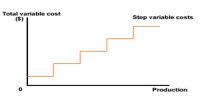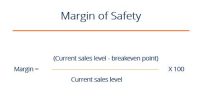To accurately assess the profitability of a business plan, managers must distinguish between fixed and variable costs. Planners should then further dissect these figures, paying particular attention to what portion of fixed costs can be reduced if needed, versus committed payment obligations. The distinctions between committed and discretionary costs are as follows:
Discretionary fixed costs
- Definition – Costs that a manager may eliminate or postpone without disrupting the firm’s operations or be affecting its productive capacity in the short run are discretionary fixed costs.
- Elimination – Can be eliminated or postpone without disrupting the firm’s operations.
- Planning horizon – A discretionary fixed cost has a short future planning horizon – under a year.
- Cost Category – These types of costs arise from annual decisions of management to spend in specific fixed cost areas.
- Example – The costs of marketing, training, exploration of new ideas are typically discretionary costs.
Committed fixed costs
- Definition – The costs that cannot be easily changed in a short run over the time are known as committed fixed costs.
- Elimination – Eliminating these would tend to cause the company harm over time.
- Planning horizon – A committed fixed cost has a long future planning horizon – more than one year.
- Cost Category – These types of cost, relate to a company’s investment in assets such as facilities and equipment.
- Example – A committed cost for a business might be its long-term investment in manufacturing plans, production machinery or key staff that it wishes to retain.
Whether you are running a small business or a multinational entity, you should have a very clear idea about the level of committed as well as discretionary fixed costs.















